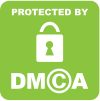About Single Point Cutting Tool Geometry.
Single Point Cutting Tool geometry:
Thee are various type of principle angles in single point cutting tool they are as follows:
1. Clearance angle:
It is the angle between the plane perpendicular to the base of the tool and portion of the flank adjusted to its base.
They are two types in Clearance angle they are:
They are two types in Clearance angle they are:
I.Front clearance angle
II.Side clearance angle
I.Front clearance angle:
It is the angle between the plane perpendicular to the base of the tool and front portion of the tool.
II.Side clearance angle:
It is the angle between the plane perpendicular to the base and side flank.
2. Lip angle:
It is the angle between the face of the tool and the ground end surface of flank it is also known has angle of keenness.
3. Cutting angle:
It is the angle between the face of the tool and line tangent to the machined surface at point of cutting.
in this there are two types 1] End cutting edge angle 2] Side cutting edge angle.
in this there are two types 1] End cutting edge angle 2] Side cutting edge angle.
Side-cutting edge angle:
This is the angle between the face and the plane which is parallel to base is called side cutting edge angle.
End-cutting edge angle:
The angle between the face and the plane which is parallel to y-axis is called end cutting axis.
4. Rake angle:
It is the angle between the face of the tool and the plane parallel to base of cutting tool.
There are two types in Rank Angle:
I.Back Rake Angle
II.Side Rank Angle
I.Back Rake Angle:
It is measured along the direction of tool shank.
II.Side Rank Angle:
It measured along the perpendicular direction to shank.
5. Shank:
This is the main portion of a solid tool which is directly inserted into the tool holder is called shank.
6. Face:
This is the to surface of the tool between shank and nose. When cutting id done the chips are used to flow along the face.
7. Nose:
This is the radius provided range from 0.4 mm to 0. 16 mm when the cutting point of tool where flank and face is meet there nose is provided. If the cutting point is sharp it may causes scratches or make marks on parts.
8. Flank:
This is the portion of the cutting tool, that is below or adjacent to the cutting edge where the work piece is directly contacted to tool.
This is the portion of the cutting tool, that is below or adjacent to the cutting edge where the work piece is directly contacted to tool.
9. Base:
This is the bottom portion of the tool. the tool which is directly inserted to tool holder or into tool post.
10. Heel:
This is the bottom part of the tool where base and flank will meet together at ends.






















Post a Comment